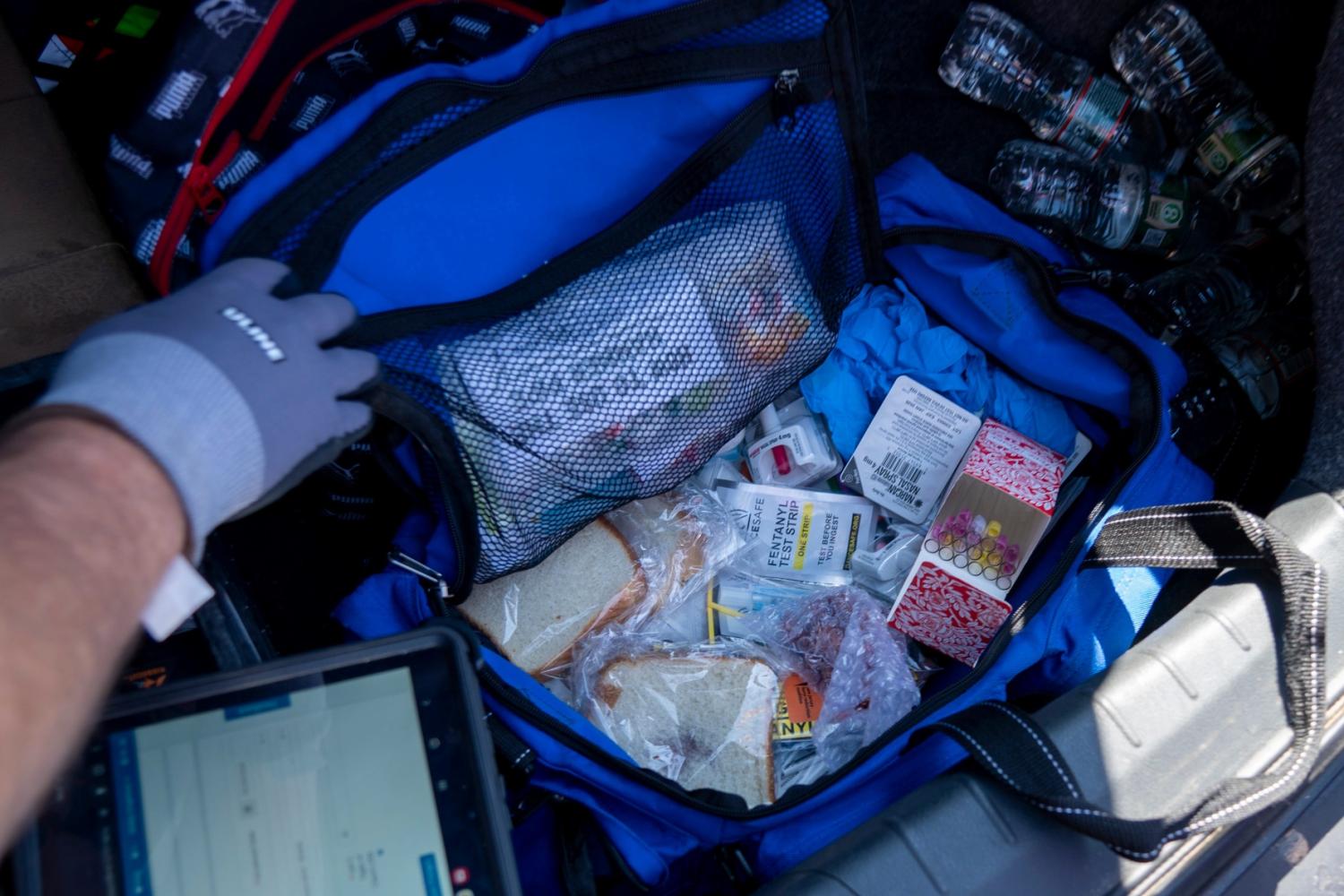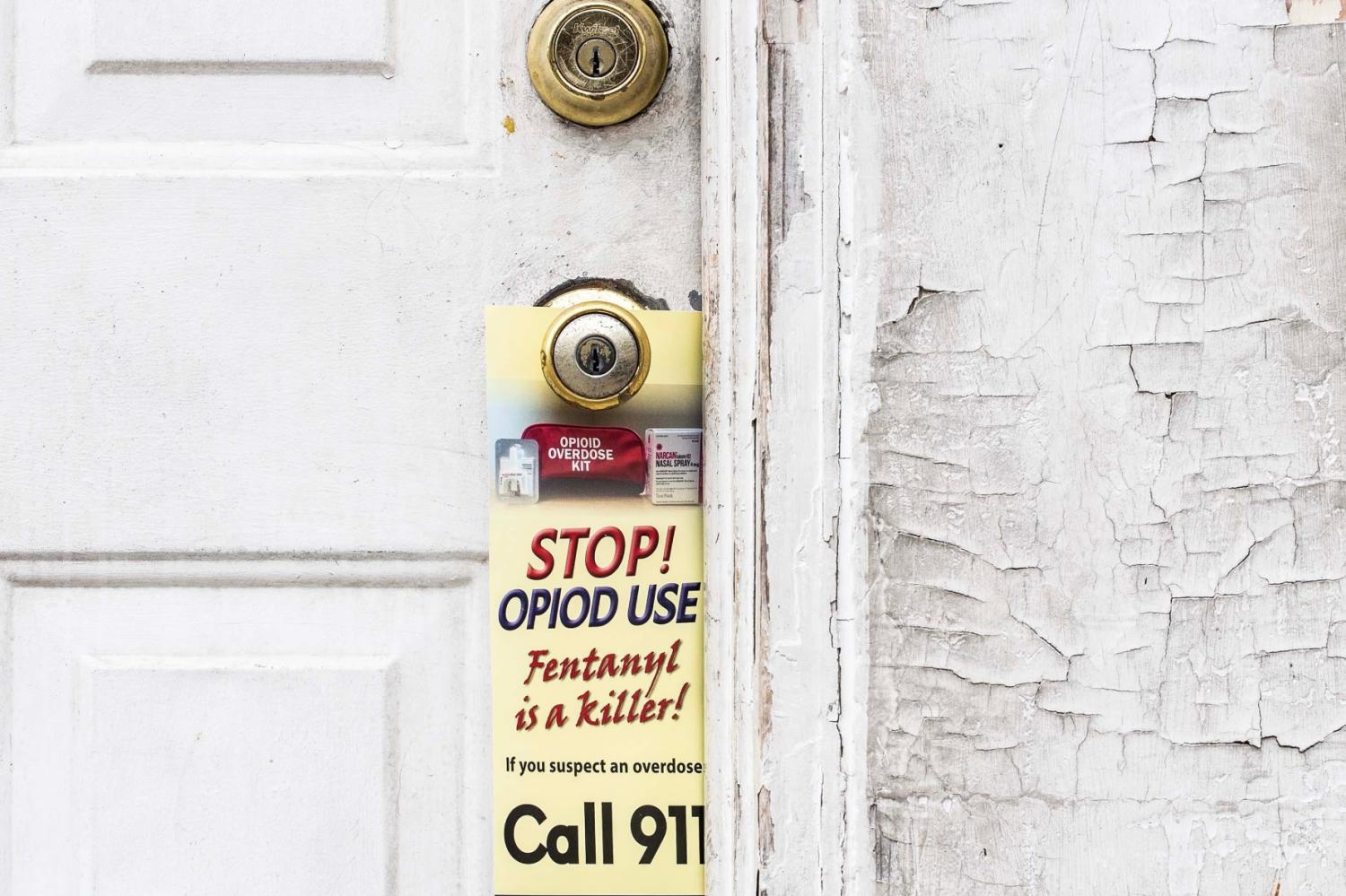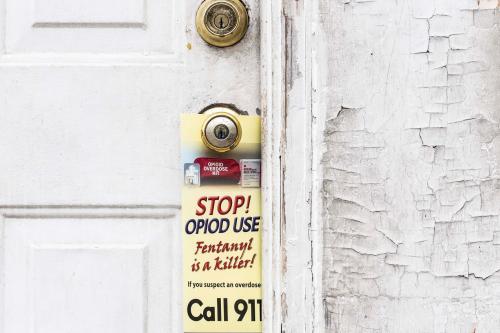Executive summary
Reducing harm is a core element of public health and is intertwined with another fundamental tenet of public health—health promotion. Amid record overdose death rates in the United States, reducing the harms associated with drug use is a critically important part of the care continuum for people who use drugs. Harm reduction is both a set of strategies to reduce harms associated with drug use, as well as a philosophical approach centered on the notion of meeting people “where they are” and treating people who use drugs with respect.
The contemporary history of harm reduction was, in part, a response to rising rates of HIV transmission in the 1980s, with the opening of syringe services programs (SSPs) across Europe, and eventually, the United States. Importantly, SSPs are not simply programs to distribute and exchange syringes, they also serve as a client-centered pathway providing services and support to people without stigma or shame.
Harm reduction services offer a critical intervention point for individuals who may have no other access to receive support or services in a non-judgmental, non-stigmatizing environment. The human—and humane—connections fostered through these programs are often less visible than the services themselves, but they are equally important.
Harm reduction, as a philosophical approach where people who use drugs are treated without shame or stigma, can be integrated into treatment and other needed services. Specific harm reduction services may include drug testing kits, syringes to reduce the risk of infectious disease, overdose prevention facilities, and overdose reversal medications for those who may witness an overdose. These programs also provide referrals or direct services that address medical needs and social determinants of health, such as housing, nutrition, legal services, and employment. The services provided at harm reduction facilities adapt to the needs of local communities and continuously evolve.
However, even during an epidemic of overdose deaths, stigma, regulatory barriers, and funding challenges limit access to harm reduction services. Obstacles include funding and operating restrictions, community opposition, and legal prohibitions. Harm reduction services are embedded into the continuum of care, helping to mitigate the negative consequences associated with drug use and improving long-term health outcomes. To deliver these services effectively, policymakers must address racial, ethnic, and other disparities in communities at the greatest risk. Delivering harm reduction at scale requires bridging the gap between service availability and service needs. Leadership must be agile, focusing on providing sustainable, evidence-based, and equitable services amid rapidly changing policy, legal, and drug supply environments.
While investment in rapid research is essential to fill knowledge gaps and develop comprehensive services, grassroots harm reduction programs must also be supported. The debate around harm reduction services is often framed as a choice between public health and community safety. However, harm reduction is essential, particularly when over 40% of fatal overdoses go unreversed even with a bystander present. Perhaps the first step to an idealized vision of harm reduction—comprehensive, evidence-based, client-centered, and trauma-informed—is agreeing that there is harm associated with substance use and that each person and community must come together to forge their own unique path forward in reducing those harms.
To achieve these goals, we recommend the following actions:
- Develop a national strategic plan for harm reduction services: This plan should clearly define and quantify the necessary scale of various harm reduction services. A comprehensive strategy should measure the unmet need for these services based on a strong evidence base, allowing the full scope of need to be estimated and resourced appropriately. Additionally, this plan should include strategies to address those needs and make a strong economic case for harm reduction services.1
- Prioritize translational research: Focus on studies that examine which harm reduction services work under specific circumstances or in different contexts, including when, where, how, and in what combination, to maximize their beneficial impact.2
- Remove legal and societal barriers: Eliminate the obstacles that prevent evidence-based harm reduction programs from being fully implemented at the local, state, and national levels. This includes addressing stigma and legislation that hinder harm reduction efforts.3
- Establish sustainable funding structures: Integrate harm reduction principles into the health care system and support providers at the necessary level.4
- Understand and address social disparities to promote health equity: Gain a better understanding of the social disparities in accessing harm reduction services at the community level. Develop comprehensive, substance use-related programs that prioritize health equity, ensuring that harm reduction services better promote health equity.5
-
Acknowledgements and disclosures
The authors would like to thank Jennifer Martinez, J.D., Ph.D., and University of Connecticut law student Jennifer Logan for their assistance in editing this paper. They would also like to thank Adam Lammon for editing, Rachel Slattery for graphical design and layout, and Diana Paz García for project coordination, as well as extend their gratitude to Jeffrey S. Crowley, MPH; Tom Hill, MSW; Mark Jenkins; and Lauren Kestner for generously sharing their insights on harm reduction.
-
Footnotes
- Michelle LeBlanc, Myra Masood, and Brittney Roy, “Supporting and Sustaining Access to Harm Reduction Services for People Who Use Drugs, “National Governors Association, https://www.nga.org/publications/supporting-and-sustaining-access-to-harm-reduction-services-for-people-who-use-drugs/; “Making the investment case: Cost-effectiveness evidence for harm reduction,” Harm Reduction International, https://hri.global/publications/making-the-investment-case-cost-effectiveness-evidence-for-harm-reduction/.
- Samantha Colledge-Frisby, et al., “Global coverage of interventions to prevent and manage drug-related harms among people who inject drugs: a systematic review,” The Lancet Global Health 11, no. 5 (May 2023): e673-e683, https://www.thelancet.com/journals/langlo/article/PIIS2214-109X(23)00058-X/fulltext.
- Jon Larsen and Sterling Johnson, “Six Opportunities to Use the Law to Support Harm Reduction,” Center for Public Health Law Research, Temple University, https://phlr.org/content/six-opportunities-use-law-support-harm-reduction.
- “Harm Reduction is Healthcare: Sustainable Funding for Harm Reduction Programs,” National Harm Reduction Coalition, https://harmreduction.org/issues/harm-reduction-is-healthcare-sustainable-funding-for-harm-reduction-programs/.
- Oluwole Jegede, et al., “What Would Equitable Harm Reduction Look Like?,” American Medical Association Journal of Ethics 26, no. 7 (July 2024): e572-e579, https://journalofethics.ama-assn.org/article/what-would-equitable-harm-reduction-look/2024-07.
The Brookings Institution is committed to quality, independence, and impact.
We are supported by a diverse array of funders. In line with our values and policies, each Brookings publication represents the sole views of its author(s).








